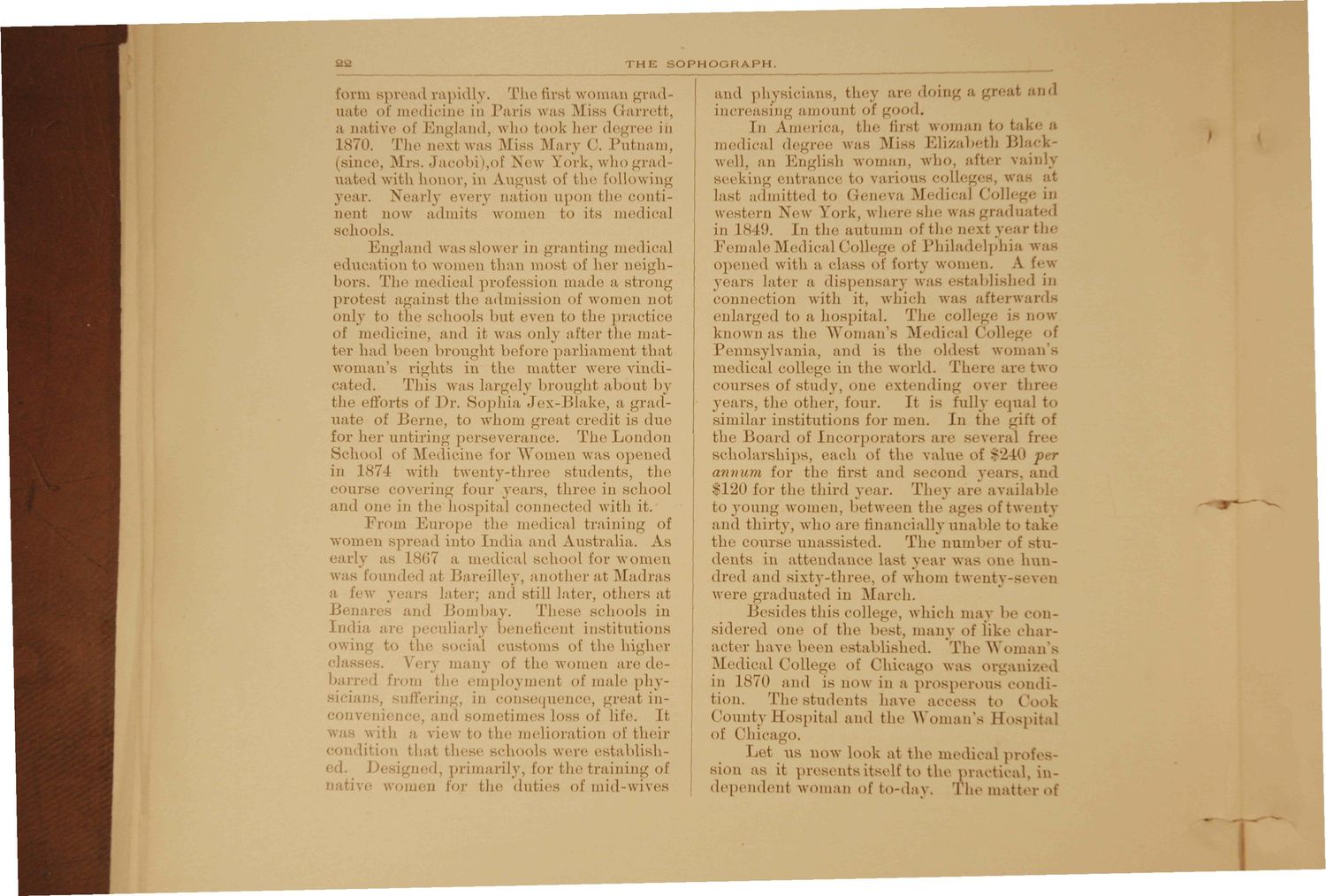| |
| |
Caption: Sophograph - 1891
This is a reduced-resolution page image for fast online browsing.

EXTRACTED TEXT FROM PAGE:
THE »HO( iHAPH, form spread rapidly. The first woman graduate of medicine in Paris was Miss Garrett, a native of England, who took her degree in 1870. The next was Miss Mary C. Putnam, (since, Mrs. Jacobi),of New York, whograduatedwith honor, in August of the following year. Nearly every nation upon the continent now admits women to its medical schools. England was slower in granting medical education to women than most of her neighbors. The medical profession made a strong protest against the admission of women not only to the schools but even to the practice of medicine, and it was only after the matter had been brought before parliament that woman's rights in the matter were vindicated. Tin's was largely brought about by the efforts of Dr. Sophia Jex-131ake, a graduate of Berne, to whom great credit is due for her untiring perseverance. The London School of Medicine for Women was opened in 1874 with twenty-three students, the course covering four years, three in school and one in the hospital connected with it. From Europe the medical training of women spread into India and Australia. As early as 1807 a medical school for women was founded at Bareilley, another at Madras a few years later; and still later, others at Benares and Bombay. These schools in India are peculiarly beneficent institutions owing to the social customs of the higher 1 classes. Very many of tin , women are debar* d from the employment o\' male phyicians, suffering, in consequence, great inuce, and sometimes loss of life. I t with a view to the melioration of their condii -n thai these schools were establishDe gned, primarily, for the training of five women for t h e d u t i e s of m i d - w i v e s and physicians, they are doing t and increasing amount of good. In America, the first woman to tak« medical degree was Miss Elizabeth Bl kwell, an English woman, who. after rainl; seeking entrance to various college was a last admitted to Geneva Medical College in western New York, where she was graduate in 1849. In the autumn of t h e next y< rfch< Female Medical College of Philadelphia w opened with a class of forty women. A few years later a dispensary was establish) I in connection with it, which was afterward enlarged to a hospital. The college is nov known as the Woman's Medical College of Pennsylvania, and is the oldest woman medical college in the world. There are two courses of study, one extending over three years, the other, four. It is fully equal to similar institutions for men. In the gift of the Board of Incorporators are several free scholarships, each of the value of $240 per annum for the first and second years, and $120 for the third year. They are availabl to young women, between the ages of twenty and thirty, who are financially unable to take the course unassisted. The number of students in attendance Last year was one hundred and sixty-three, of whom twenty-seven were graduated in March. Besides this college, which may be considered one of the best, many oi like character have been established. The Woman's .Medical College (^ Chicago was organized in 1870 and is now in a prosperous condition. The students have access to Cook County Hospital and the Woman's Bospitrtl of Chicago. Let us now look at the medical pr. s sion as it presents itself t o t h e practical, in dependent woman of to-day. The matter
| |